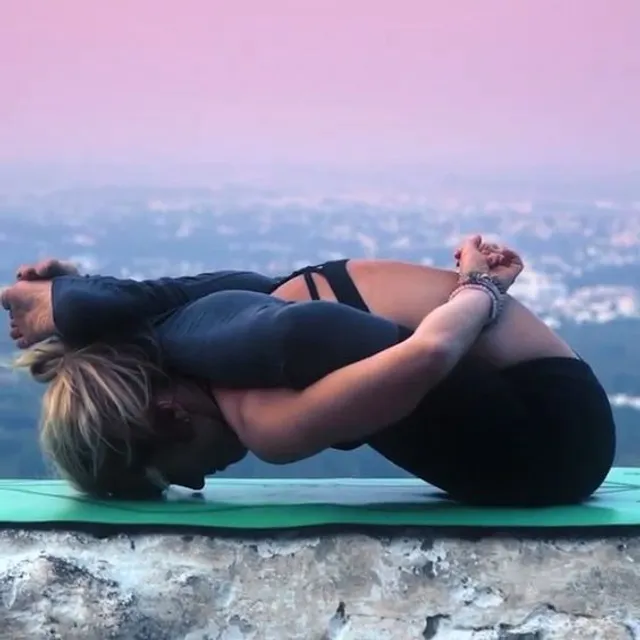
KURMASANA ET SUPTA KURMASANA
Kurma means turtle, this asana is dedicated to Kurma the turtle, incarnation of Visnu, the god who maintains the universe. The legend says that “in a universal flood a great number of divine treasures had been lost, such as nectar (amrta) thanks to which the gods preserved their youth. To find their lost treasures, the gods made an alliance with the demons and together undertook the churning of the cosmic ocean. Visnu took the form of a large turtle and plunged to the bottom of the ocean. On his back, Mount Mandara served as a churning stick around which the divine vasuki serpent was wrapped like a rope. The ocean was churned by the combined efforts of gods and demons, who by alternately pulling on the serpent rotated the mountain. From the churned ocean emerged Laksmi, consort of Visnu, goddess of beauty and prosperity, of nectar and other divine treasures.
Supta Kurmasana is a sacred posture for a yogi. She describes the sacred qualities of a stable mind: “When, like a tortoise retracting its limbs to all sides, the yogi withdraws his senses from their objects, then his understanding is well established.” In this posture the limbs are retracted and the body resembles a turtle. The mind becomes calm and peaceful and welcomes pain as well as joy with equanimity. As the emotions caused by passion, fear and anger lose their grip on the mind, it will gradually free itself from the anxiety caused by pain and also from the attachment to pleasures.
These two postures, which act in many different places at the same time, stretch the upper and lower back areas, tone the gastrointestinal tract and abdominal organs and stretch the hamstrings and adductors.
Thanks to their deep back stretches, they loosen the spine and prevent deformities. They stimulate the functioning of the digestive organs (liver, stomach, intestines) and promote elimination and help fight against problems in the lower abdomen.
Kurmasana and Supta Kurmasana relax and internalize, they help regulate sleep, calm anxiety, soothe the nervous system and invite withdrawal of the senses.
They also stimulate the solar plexus by balancing the third chakra, Manipura. The plexus is a nerve center that directs the behavior of the organs to which it is linked. It is located between the twelfth vertebra of the thorax and the first lumbar vertebra behind the stomach but in front of the diaphragm (more simply, below the chest but well above the navel). The solar plexus is the center of internal and external stability, it is directly linked to the emotions, its balance thus guides fears, self-esteem, fatigue, capacity for action,... If it is blocked, all these emotions will be shaken up.
Access the annotated class sequence with posture images and join the community of teachers!